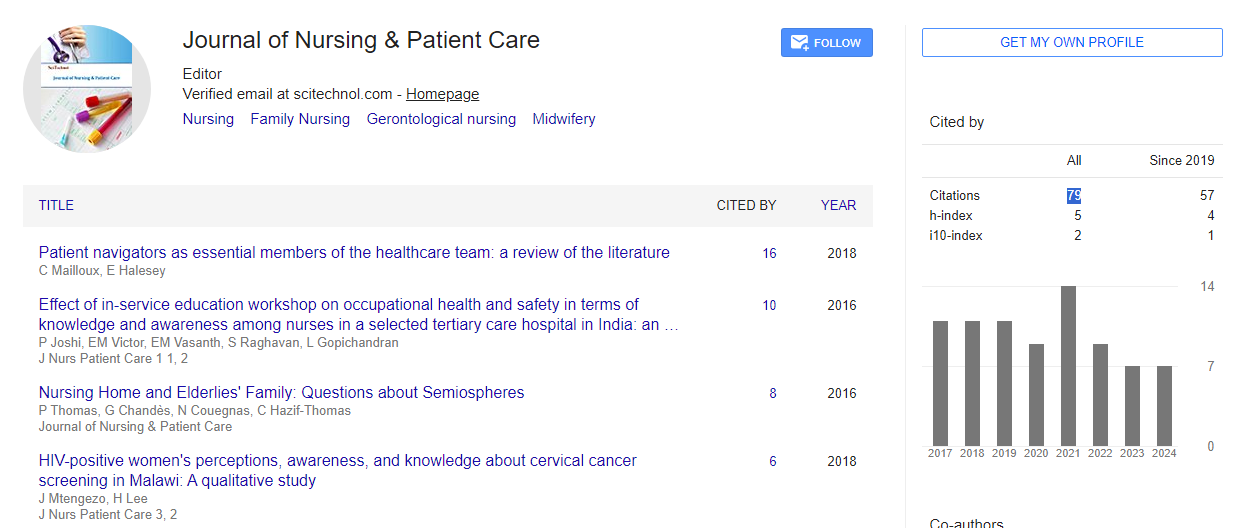Barriers and enablers of skin-to-skin contact within the golden hour after birth in a South African public hospital
Carin Maree, Ashni Kalideen and Seugnette Rossouw
University of Pretoria, South Africa
: J Nurs Patient Care
Abstract
Statement of the Problem: Skin-to-skin contact between a new-born and a mother is crucial during the golden hour after birth, as that is a period where a newborn is most susceptible for creation of bonding and attachment, and favourable nurturing behaviours can be initiated. These in turn is associated with long-term sequelae such as establishment of future interpersonal relationships and overall well-being of the child, as well as positive parenting experiences and behaviour. In spite of all information available regarding skin-to-skin contact in the golden hour, the achievement thereof fell short in a semi-rural public hospital in KwaZulu Natal, South Africa. It was deemed necessary to determine the barriers and enablers present in the particular setting in order to develop strategies to optimise skin-to-skin contact after normal deliveries in the maternity section, as well as after caesarean section births in the operating theatre complex. Methodology: A quantitative descriptive approach was followed using questionnaires to determine barriers and enablers of skin-to-skin contact in the golden hour after birth in the particular hospital. The total population (N=50) was included as participants. Barriers to skin-to-skin contact were identified as inadequate staffing, a negative attitude, maternal barriers, use of equipment, and a lack of governance. Many respondents felt that a champion or nursery nurse would be a valuable enabler of skin-to-skin contact. Enablers were indicated as the availability of policies and guidelines, maternal and new-born stability, teamwork, as well as maternal and staff education. Most respondents agreed skin-to-skin contact contributes to physiological stability of the new-born while enhancing bonding and attachment between the mother and her new-born. Conclusion & Significance: The outcomes of the study could be used by the hospital management to develop and implement strategies to optimise skin-to-skin contact in the golden hour by utilising of the enablers and finding ways to overcome the barriers, and in turn contribute to positive outcomes for mothers and babies on the short and long term.
Biography
Carin Maree is specialised as a neonatal nurse specialist and nurse educator, and is employed by the University of Pretoria as an associate professor. She is responsible for supervision of master’s and doctoral students, as well as education of post-basic clinical nurse students. She serves as the president of the Neonatal Nurses Association of South Africa and a board member of the Council of International Neonatal Nurses.
 Spanish
Spanish  Chinese
Chinese  Russian
Russian  German
German  French
French  Japanese
Japanese  Portuguese
Portuguese  Hindi
Hindi 